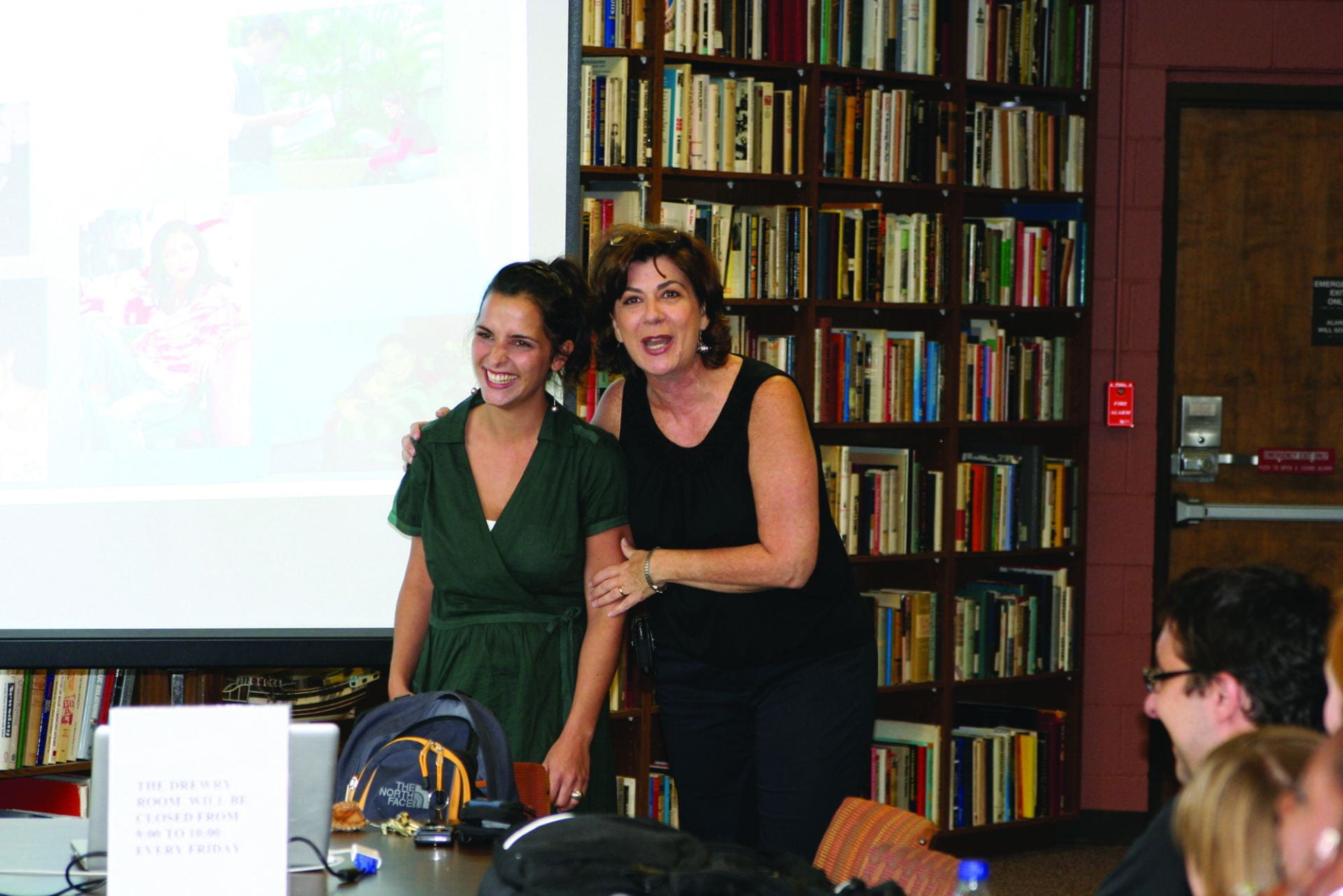You Teach a Class about Telenovelas? (gasp!)
To teach is to learn twice.
–Joseph Joubert
There is a place where everything comes together: research, learning and teaching; telenovela, culture and society; industry, art and academia; Latin America and the rest of the world. It is the classroom where I teach “Telenovelas, Culture and Society.” There I lecture and discuss telenovelas and the culture(s) that produce and consume them. I also turn Latin America into a telenovela, and when I do that I understand both better.
An extraordinary synergy emerges when we bring our research into the classroom. Research analysis sharpens, the professor becomes a better teacher, students’ motivation level increases significantly and the journey through a sea of questions that every course is, becomes an exciting and pleasant cruise. The energy generated is a stimulant like no other. This experience, however, is not frequent. Particularly for those of us who do research under the umbrella of cultural studies, but who teach in professional schools such as those related to media communication. These schools emphasize skills and techniques, often sacrificing the necessary reflection about the socio-cultural role of media industries and their content. Hence, the research-teaching synergy can be a luxury for a professor like me. And if she teaches in a public university in the United States and her research topic is a deprecated television genre that originated abroad, then we are talking about the rarest of teaching privileges. It is so strange that there is not a week that I am not asked something about it—Is this a class on soap operas? Many want the details of how telenovelas made it to the university classroom.
F.A.Q.
1. What do you mean by a class about telenovelas? Do you teach how to write telenovelas?
The course title is “Telenovelas, Culture and Society.” It does not aim to teach how to write or produce a telenovela, but examines telenovelas as the epicenter of the complex articulations between media, culture and society. Thus, we study this genre’s history, we try to classify the immense universe of telenovela production, and we spend the time necessary to learn and understand how these shows are written, produced, consumed, regulated and globalized. In the process, students not only become aware of these details, but also learn about the sociocultural mechanisms of all those involved—from the head of the lead writer, who creates the story, to the hearts of those who consume it loyally every day.
2. Do you teach the class in English?
Yes, but the course requires an intermediate level of Spanish. Readings are in English and Spanish, and students must be able to understand the gist of the scenes they will be watching. My experience in the classroom is consistent with the research of the secretary of the North American Academy of the Spanish Language, Jorge Ignacio Covarrubias, who asserts that telenovelas heighten interest in Spanish for people who do not speak the language and augment the vocabulary of those who are from countries in which Spanish is the first language. In that sense, students receive the added benefit of practicing and improving their Spanish and experiencing how knowledge of a foreign language allows them to interact with a global industry in which English is not predominant.
3. How many students register for the class? What’s their profile? Are they all Latin@s?
The class is an elective designed for 24 undergraduate students. However, in the last two years, there were 28 students. Three out of four are juniors and senior studying majors related to mass communication: journalism, advertising, public relations, broadcasting and media studies. The rest are majoring in Latin American and Caribbean Studies. Graduate students interested in media and/or Latin America also register for the class as an independent study. I require more complex assignments from them. Most of the students have been studying Spanish since high school and have never watched a telenovela.
Their ethnic profile reflects the University of Georgia’s student body, which is mostly Caucasian. Out of the 28 students that I taught last year, three were Latin@s and two were African Americans. Latin@s who take the class are not necessarily fully bilingual, but they are usually the children or grandchildren of people who regularly watch telenovelas. They are intrigued by the insertion of telenovelas in their families’ everyday lives.
4. But, what do you do in class? Are you watching telenovelas all the time?
I prepare class the traditional way with content determined by the day’s objectives. But I use whatever I think will help me achieve those objectives: lecture, discussion, videos, readings. In that sense, I am not very traditional. I take advantage of the web, social media and everything that digital technologies offer. I mix and alternate activities so that the class rhythm varies in each session. My lesson plan is always based on a participatory classroom, allowing students to play a key role in class dynamics.
By the last month of class, the students dominate the majority of the content. We then talk through videoconference with people who work in the telenovela industry: production executives, writers, directors, producers and actors. We also interview telenovela viewers around the world. Students and guests both enjoy these interactions—key moments in the semester. There is no better way to cement learning. For example, I can explain for hours on end how censorship and self-censorship work currently in Venezuela. But, it is the conversations with Marcel Granier, CEO of extinct network RCTV, and various Venezuelan writers and actors that really bring home the country’s media situation and its grave implications.
5. Do you have exams? How do you evaluate learning?
There are no exams. The final grade is the product of written assignments, a presentation and active participation in class activities. At the beginning of the semester each student chooses a telenovela that she/he will analyze. The first writing assignment is a paper focusing on the representations of gender, class and/or specific topics present in that telenovela and how through those representations identities are constructed. Later students examine the consumption aspects of “their” telenovela—ratings, shares and viewers’ social media activity—and make a presentation to the class about these.
Throughout the semester each student must continuously reflect about telenovelas, how these melodramas evidence the links between media, culture and society, and examine their own learning process as students. These reflections are written in the class blog, which is not merely one more assignment; it is a text—always fluid and under construction—to be read and commented in class. (You can read the Fall 2016 blog at http://telenovelasfall2016.blogspot.com/2016/)
Finally, students write a term paper on any aspect of the telenovela genre that interests them. A few examples are the role of physical beauty in telenovelas, the different versions of Yo soy Betty, la fea around the world, the controversies about narconovelas, the use of “neutral Spanish” and the genre’s difficult evolution regarding LGBTQ stories.
Assignments and class content help me achieve my main goals: to develop the students’ critical thinking through research and analysis, to show them how the knowledge of a second language opens fascinating worlds, to make them realize that audience members are not dupes and, at the same time, that no media text is innocent. We all need a daily dose of fiction. But, the way we engage with those plots is a testimony to the enduring power of storytelling. In fact, as we study these melodramas, the students and I also document our own learning stories.
Three Classroom Stories
The Peoples’ Poet
Leonardo Padrón said “freedom of expression is a writer’s oxygen.” […] As journalism students, freedom of expression is something we fight for and utilize every single day. I would even go so far to say that American citizens take it for granted and don’t realize how essential it is, both for other civil liberties and as a civil liberty itself. Padrón was the most impressive guest we have had all semester in our class because I walked away with several profound statements reverberating in my brain, primarily the freedom of expression metaphor, but also his reasoning for voluntarily remaining in a country that restricts his oxygen flow. My natural reaction would be to leave […] However, after listening to Padrón talk about his reasons for staying, I feel like my hypothetical reasons for fleeing lack a comprehensive view. He said, more or less, that if everyone who had a voice left Venezuela, the country would become an orphan and have no one fighting for it. This stuck out to me, both for its bravery and loyalty to promoting true change. […] He said his proudest accomplishment is persevering in the telenovela genre, but I would argue his best accomplishment is persevering as a writer, despite being suffocated by a lack of freedom of expression.
—Matt Mattaxas in the class blog
Marisa
I announced in class that our next videoconference would be with Venezuelan actor Marisa Román, who had starred in several telenovelas and was only a few years older than my students. We had discussed her work in class. The students prepared for the conversation and entered the classroom excited and chatty. The videoconference setup was ready. Suddenly, Marisa entered the classroom and stood by my side: “Buenas tardes, soy Marisa Román”.
I will never forget my students’ faces. Surprise and emotion overwhelmed them. They forgot the questions they had prepared. It was beautiful to see them get over their stupor and have a lively conversation with Marisa. She was smart, charming and generous. She helped my students dust off the ephemeral glitter of celebrity as she evidenced the young woman, her love for her art and the insecurities that are endemic in the acting profession. At one point, Marisa spoke about the privileges that U.S. college students enjoy, compared to university students in Latin America and other regions of the world. It was an education that went beyond the course’s topics and the class time period. It was unforgettable.
Joy’s Comment on Nicole’s Blog Post on Health Messages in Telenovelas
I’m trying to decide how personal to get with this comment. I agree that telenovelas absolutely work to convey public health messages. I think that writers must have a special skill to weave the message into the story so it doesn’t feel disjointed or contrived. We’ve seen some excellent examples of that in this class. One such example was the public health message regarding breast cancer in La Mujer Perfecta. The telenovela showed the reality that women can develop breast cancer at a much younger age than is typically thought. We watched the clips in class, and the message was seamlessly woven into the story, yet the point was clearly expressed. The personal bit of it is that I had been experiencing breast pain for a while, and so after watching in class La Mujer Perfecta, I decided to get it checked out. I am thankful that I did, because the doctors found a mass (most likely benign), which I am having removed. I think it’s important that stories like that are shared for the potential benefit of others—and telenovelas are an appropriate and effective medium for doing so. I absolutely believe in the power of telenovelas to make a positive difference.
When Telenovelas Go to the Classroom
In the classroom, where everything comes together, the professor is also a student. In there, some discover telenovelas for the first time, others see in these stories facets they had not suspected and all of us get hooked as we traverse the circuit to try to comprehend the addictive soul of these melodramas. In the classroom, ratings are historical data, the traditional female protagonist and antagonist point to an incomplete and limiting dichotomy for women—virgin or whore—and we understand that the line that divides reality and mediated fiction is always porous.
In class, we slowly strip the telenovela from its colorful sociocultural trappings until we have in front of us its bare commercial anatomy. But even in front of that cold image, we remain enthralled. That is not the only paradox we encounter because there are many contradictions in a soulless industry—always cloaked by the misperceptions related to celebrity—that is populated by souls as complex and contradictory as the stories they tell and as our own human condition.
Because, even though the telenovela lives in one of the most deprecated alleys of popular culture, when it goes to the classroom it teaches us lessons in the political economy of media, illustrates a whole family of communication theories, and evidences for us the scaffolding of taboos, principles and mores that supports every culture. It also speaks to us, directly and unabashedly, about emotions.
Yes, emotions, which are fundamentally human. Emotions, a topic that is both universal and denigrated, like telenovelas themselves.
Fall 2017, Volume XVII, Number 1
Carolina Acosta-Alzuru, Ph.D., is Josiah Meigs Distinguished Teaching Professor in the Grady College of Journalism and Mass Communication at the University of Georgia. Her many publications on telenovelas include three books: Venezuela es una telenovela: Melodrama, realidad y crisis (Editorial Alfa, 2007), La incandescencia de las cosas: Conversaciones con Leonardo Padrón (Editorial Alfa, 2013) and Telenovela adentro (Editorial Alfa, 2015).
Related Articles
Telenovela Heroines
I first became interested in telenovelas as an academic subject when, more than thirty years ago, I heard my then two-year-old daughter sing a song for the first time. It was the opening…
Sharing Latin Loves in Lithuania
When I was growing up in Lithuania, at the time the country transitioned from the Soviet rule to independence, my grandmother and I used to watch Mexican and Venezuelan telenovelas…
Narconovelas
n May 2017, the acclaimed band Los Tigres del Norte was fined $25,000 for singing a couple of narcocorridos (traditional Mexican ballads with lyrics that tell of the exploits of drug traffickers)…





